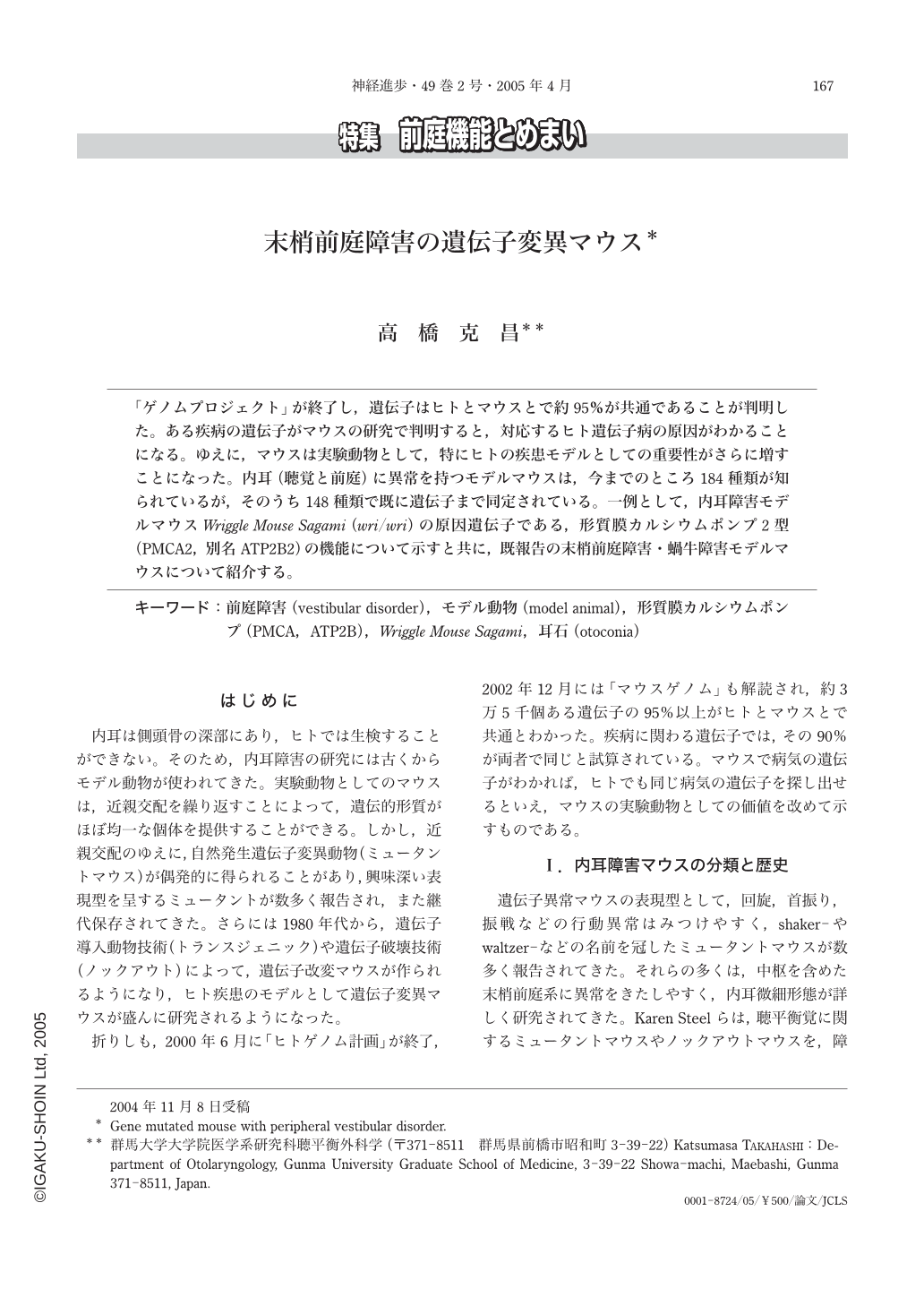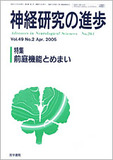Japanese
English
- 有料閲覧
- Abstract 文献概要
- 1ページ目 Look Inside
「ゲノムプロジェクト」が終了し,遺伝子はヒトとマウスとで約95%が共通であることが判明した。ある疾病の遺伝子がマウスの研究で判明すると,対応するヒト遺伝子病の原因がわかることになる。ゆえに,マウスは実験動物として,特にヒトの疾患モデルとしての重要性がさらに増すことになった。内耳(聴覚と前庭)に異常を持つモデルマウスは,今までのところ184種類が知られているが,そのうち148種類で既に遺伝子まで同定されている。一例として,内耳障害モデルマウスWriggle Mouse Sagami(wri/wri)の原因遺伝子である,形質膜カルシウムポンプ2型(PMCA2,別名ATP2B2)の機能について示すと共に,既報告の末梢前庭障害・蝸牛障害モデルマウスについて紹介する。
The“genome project”has revealed that about 95% of genes are common between human and mice. If a mouse gene is identified as involved in a disease, a human gene causing a hereditary disease may likewise be revealed. Mice are thus extremely valuable as an experimental animal, especially as a model of human disease. A total of 184 different types of mice with inner ear disorder have been reported, and the causative genes are known for 148 of these. Wriggle Mouse Sagami(wri/wri)is characterized by severe hearing loss and abnormal movements. Histopathological study has demonstrated that hair cells in the cochlea and saccule are degenerated, and the otoconia are absent from the saccule. Molecular biological study has revealed that the causal gene in this model is plasma membrane calcium ATPase type 2(PMCA2, also known as ATP2B2). Point mutation in a conserved domain of this gene results in an amino acid substitution. Sound or rotation stimuli activate stereocilia of hair cells, and Ca2+ then enters the cytoplasm through mechano-transduction or voltage-gated Ca2+ channels, which generate an action potential. PMCA2 is then necessary to pump Ca2+ from the cytoplasm into the extracellular space. PMCA displays 4 subtypes(1-4)and PMCA2 is present only in the inner ear. The PMCA mechanism is considered critical for cell survival, so hair cells disappear and the ability of supporting cells to form otoconia is lost.

Copyright © 2005, Igaku-Shoin Ltd. All rights reserved.


